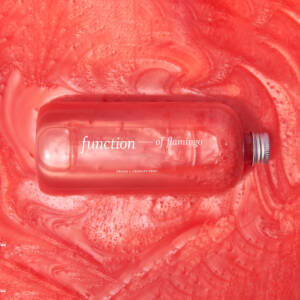Disclaimer: The information provided is not intended as medical advice. For any medical concerns, always contact your doctor.
Casually running your fingers through your hair, your hand comes away with a few strands stuck to it. You can’t help but slightly furrow your brows as you contemplate whether it’s normal — or a sign you should worry about hair shedding.
OK, before you work yourself into a panic, we want to share an important PSA: hair shedding is completely natural and happens to all of us. That said, various factors can escalate normal hair fall so that it tips your mane into the dangerous territory of hair loss.
Ahead, you’ll learn how hair shedding happens with regard to your hair growth cycle. Most importantly, you’ll discover how to tell when hair shedding is excessive and what you can do to address some of its symptoms.
Hair Shedding and the Hair Growth Cycle
To understand hair shedding, we first need to look at your hair structure and its growth cycle. For the uninitiated, hair is primarily made up of:
- The hair follicle, which comprises the hair bulb that the hair shaft grows from; hair follicles live beneath the skin of your scalp.
- The hair shaft, which consists of the cuticle, cortex, and medulla; it’s the visible part of your hair that protrudes out of your scalp.
Zeroing on hair follicles, they undergo the hair growth cycle that is split into three phases:
- Anagen phase: Also called the growth phase, this is when the follicles grow new hair shafts; it can last between 2-6 years.
- Catagen phase: Also called the transitional phase or regression phase, it typically lasts a few weeks. During this time, the follicles slightly shrink, and hair growth slows down. When too many follicles enter this phase simultaneously, it gives off the illusion of thinning hair.
- Telogen phase: Also called the resting phase, this usually takes around three months. The follicles stop growing the hair shafts, causing the old fibers to shed so that new hair can start forming again.
As you can see, hair shedding is part and parcel of life. Each of us shed about 100 strands per day.
The reason why you aren’t completely bald or sport patchy areas on your scalp is because your follicles grow and shed asynchronously. In human-speak, that means not all of your follicles are in the transitional phase or resting phase. At any point in time, roughly 80-90% of your follicles are in the anagen phase, 1-5% in the catagen phase, and 10-20% in the telogen phase.
When Hair Shedding Is Not Normal
When the rate of your hair falling out supersedes that of hair growth, that’s when you’re experiencing excessive hair shedding. It usually manifests in various forms. Look out for signs like a receding hairline, small bald spots, and even full-on baldness.
Here are the most common types of hair loss associated with excessive shedding:
- Androgenetic alopecia: This type of hair loss is generally known as female pattern baldness or female pattern hair loss. It features a receding hairline, typically in an M-shape, and may lead to baldness over time.
- Telogen effluvium: This temporary form of hair loss occurs when fewer follicles enter the growth phase and more follicles are in the resting phase. The excessive shedding then leads to thinning hair without baldness.
- Anagen effluvium: Unlike telogen effluvium, anagen effluvium occurs during the growth phase of your hair cycle. Due to factors like chemotherapy, hair follicles lose their ability to grow hair.
- Alopecia areata: This type of hair loss is classified as an autoimmune condition. Your immune system mistakes your follicles for foreign substances and attacks them. The resulting hair loss follows an unpredictable pattern of small bald patches.
- Traction alopecia: This form of hair loss occurs when you repeatedly pull on your hair. Common culprits include tight hairstyles (like braids and ponytails), hair extensions, and chemical treatments (such as hair relaxers).
Knowing which type of excessive shedding you’re struggling with can help you decide how to address the increased hair fall.
Common Causes of Hair Shedding
While it’s true that the genetic dice influences how much hair you shed, mechanical forces like hair brushing, blow-drying, and tight hairstyles are everyday causes of hair shedding. Intrinsic factors, say, hormonal changes and nutrient deficiencies, can also increase hair fall, putting you at risk of actual hair loss.
Here are some of the most common causes of hair loss and excessive shedding.
Hairstyling
Tight hairstyles like a high ponytail and hair extensions may score you some points in the styling department. Unfortunately, constantly pulling your hair back in these restrictive hairstyles tugs on your roots. This creates excessive scalp tension that can trigger traction alopecia.
While traction alopecia is typically reversible in its early stages, research warns that it could eventually lead to more permanent patches of hair loss if the use of tight hairstyles continues.
Stress
Stress has long been stressed (pun intended) as a trigger and aggravator of excessive hair shedding. This could be due to a stressful event such as a loved one falling ill or having just given birth. In fact, a small study involving 33 medical students found that exam-induced stress may affect the immune system and “transiently hamper hair growth.”
How it happens: Internal and external stressors cause your body to produce too much cortisol production (aka the well-known stress hormone). Unfortunately, excess cortisol does more harm than good to your follicles’ hair growth cycle. This, in turn, increases the rate of healthy hair falling out.
Nutrient Deficiencies
Not getting enough nutrients in your diet can also lead to excessive shedding and hair loss.
For example, research suggests that low iron levels (which can lead to anemia) “may play a certain role especially in premenopausal FPHL” (female pattern hair loss). Another 2007 study cautioned that iron deficiency “represents a risk factor for hair loss in non-menopausal women.”
With regards to other types of nutrient deficiencies, one 2019 study explained that “riboflavin, biotin, folate, and vitamin B12 deficiencies have been associated with hair loss.”
Hormonal Imbalance
Hormonal imbalance is another common cause of the various types of hair loss mentioned earlier. Case in point: hormonal fluctuations have been linked to chronic telogen effluvium.
More commonly, menopause is often associated with female pattern hair loss. During this period, the production of female hormones (estrogen and progesterone) drops while male hormones (androgens) surge. These hormonal changes shorten the growth phase of your follicles, possibly resulting in thinning hair.
On top of that, thyroid disorders are also linked to hair loss. In fact, research indicates that hypothyroidism (when the thyroid gland produces too little thyroid hormones) is commonly associated with alopecia areata.
Specific Scalp Conditions
Certain scalp conditions may indirectly trigger hair fall. For example, people affected by dandruff and psoriasis tend to scratch their heads more frequently or vigorously to relieve the itch and flakes.
Unfortunately, this damages follicles and can potentially result in temporary hair loss. Once the scalp issue clears up, the follicles usually recover so that hair regrows in the affected areas.
3 Tips That May Help With Hair Shedding
Understanding the different causes of excessive shedding can help you identify what you need for hair fall control. Consider these three easy tips that may help.
1. Review Your Haircare and Styling Routine
Haircare products serve as the bedrock of your routine to downplay excessive shedding. Pamper your locks with the right products targeted at your hair’s unique needs. For example, with Function of Beauty’s custom shampoo and conditioner, you can add the following hair goals when building your haircare formula:
- Nourish roots: Helps nourish your hair bulbs and shafts, promoting the appearance of healthier, fuller hair.
- Rejuvenate: Revitalizes hair to prevent premature aging caused by environmental stressors, heat and chemical styling, and nutrient loss.
- Replenish hair: Help replenish damaged, nutrient-depleted strands and protect your hair from environmental stressors.
- Strengthen: Helps increase your hair’s resilience and elasticity while protecting your hair from breakage.
The way you style your hair on the daily also impacts how much hair falls out. Try to limit scalp tension as much as possible and give your tresses regular breaks from tight hairstyles, heat-styling, and chemical treatments.
2. Eat Healthy, Balanced Meals
Our mantra at Function of Beauty: you are what you eat. Because low levels of specific nutrients — like iron and vitamin B12 — have been linked to hair loss, prioritize healthy, balanced meals.
Lean proteins are a must, given that each strand is made up of a structural protein called keratin. So are iron-rich foods like dark leafy greens and red meats, as well as biotin-based ones — think egg yolks and legumes. In need of some inspo? Check out our in-depth guide for meal-prepping your way to healthier-looking hair!
Pro tip: Consult your doctor or dietitian on suitable dietary supplements, such as a multivitamin, to help tackle specific nutrient deficiencies.
3. Practice Stress-Reducing Techniques
We won’t go so far as to imply hot yoga can help increase the amount of hair on your scalp (as much as we wish to!). That said, if you suspect stress is the reason for the increased number of hair strands falling off your scalp, you may want to look toward stress-reducing techniques.
A meta-analysis involving 34 studies found that meditation reduced cortisol levels in people who were experiencing stressful events. While more research is needed to bridge the gap between stress reduction and hair loss, practicing techniques like mindfulness meditation can help benefit your overall health and wellness, hair included.
Don’t Lose Hair Over Losing Hair
Contrary to popular misconception, hair shedding is a natural fact of life. It’s only when it gets out of hand that you need to do something about it. Various causes, such as stress and tight hairstyles, can contribute to increased hair fall. Pinpointing the exact causes helps you formulate an effective plan to tackle the excessive shedding.
If you suspect a medical condition or a scalp issue is causing you to lose more hair than normal, consult a professional, whether it’s your primary doctor, dermatologist, or trichologist. For the most part, though, hair shedding is often manageable with healthy lifestyle tweaks and the right haircare products. Head over to our hair quiz to custom-build haircare products made just for your locks.





